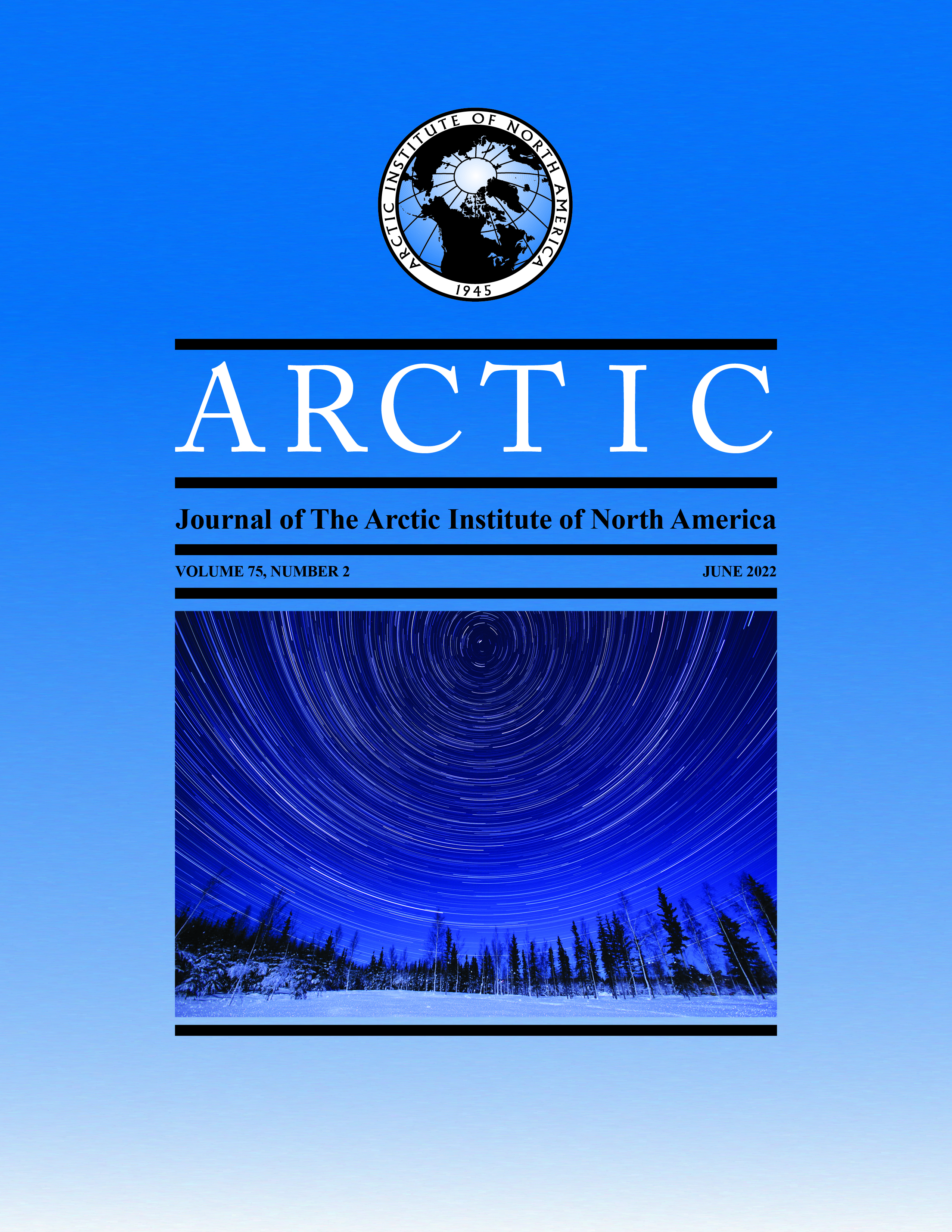Food Storage in Permafrost and Seasonally Frozen Ground in Chukotka and Alaska Communities
DOI:
https://doi.org/10.14430/arctic75259Keywords:
food cellars; k’aetyran (Chukchi); siqlugaq (Yupik); siġļuaq (Iñupiaq); permafrost; food security; aging; fermentationAbstract
Food cellars, otherwise referred to as ice or meat cellars, (lednik in Russian, k’aetyran in Chukchi, siġļuaq in Iñupiaq, and siqlugaq in Yupik) are a natural form of refrigeration in permafrost or seasonally frozen ground used to preserve, age, and ferment foods harvested for subsistence, including marine mammals, birds, fish, and plants. Indigenous peoples throughout the Arctic have constructed cellars in frozen ground for millennia. This paper focuses on cellars in Russian and American coastal and island communities of the Bering Strait, the region otherwise known as Beringia. This area has a unique, culturally rich, and politically dynamic history. Many traditions associated with cellars are threatened in Chukchi communities in Russia because of the impacts of climate change, relocation, dietary changes, and industrial development. However, even with warmer temperatures, cellars still provide a means to age and ferment food stuffs following traditional methods. In cooperation with local stakeholders, we measured internal temperatures of 18 cellars in 13 communities throughout the Bering Strait region and northern Alaska. Though cellars are widely used in permafrost regions, their structure, usage, and maintenance methods differ and exhibit influences of local climates, traditions, and economic activities. Monitoring internal temperatures and recording structural descriptions of cellars is important in the face of climate change to better understand the variety and resilience of living adaptations in different cold regions.
Downloads
Downloads
Published
Issue
Section
License
Copyright (c) 2022 ARCTIC

This work is licensed under a Creative Commons Attribution 4.0 International License.


